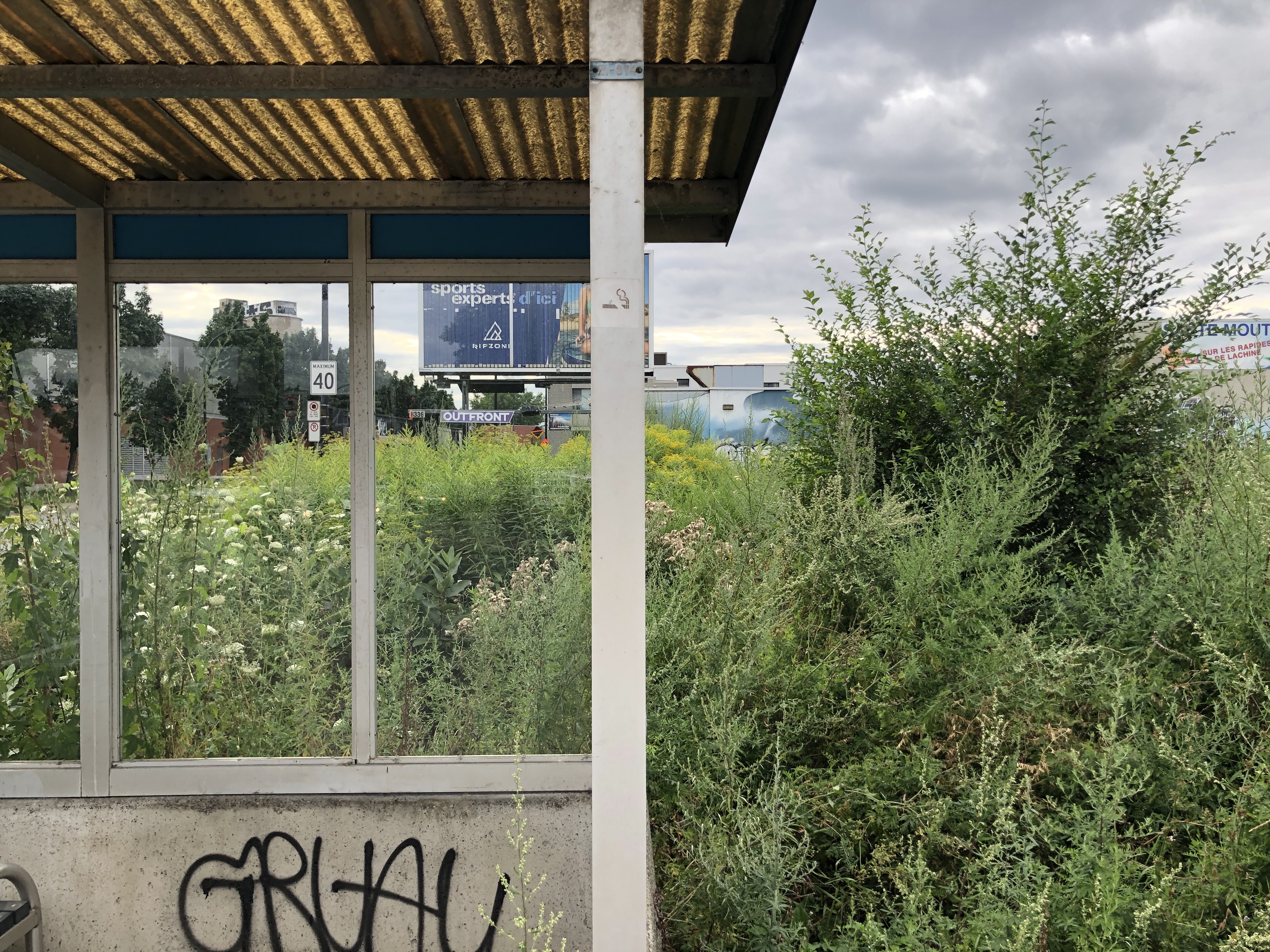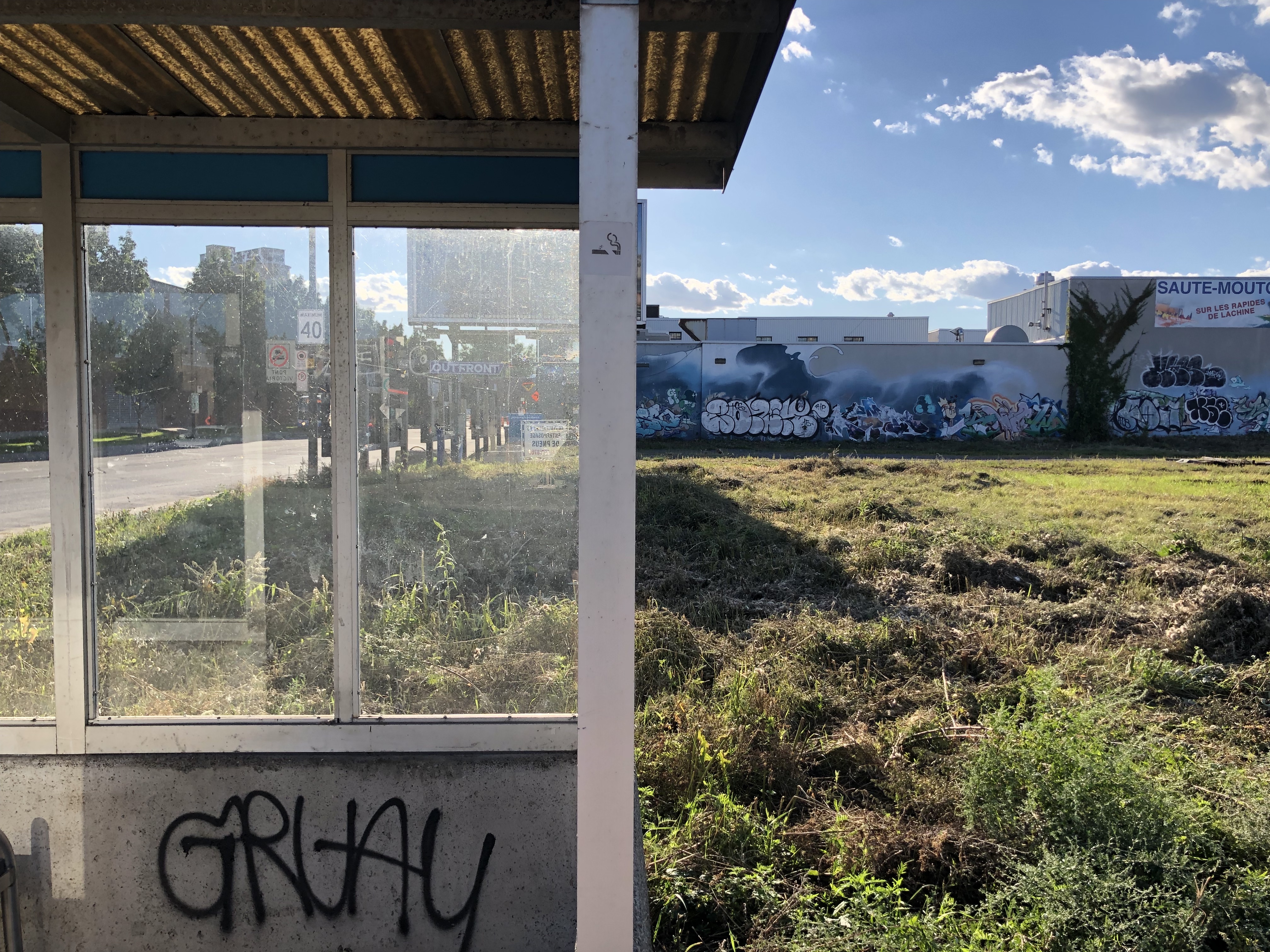🌱 The Dust Lot
I don’t know who owns the dust lot on the corner of Bridge and Wellington. Whoever it is, I hope that this year, they won’t mow down the wildflowers.
I know that on paper, it’s just an empty lot. I know it’s a perfect square, in an industrial area, surrounded by traffic on all sides. And I know that one day, the lot will be developed, and it will become a unit, with an officially recognized purpose, selected from a pre-approved set of categories.
But in the meantime, against all odds, it’s alive.

I started regularly passing this lot on my runs when I moved to Pointe Saint Charles in 2021. The bare patch of dirt turned green in the spring, and by early summer it was a veritable habitat. Among the multitude of species I noticed that milkweed, the plant that feeds the endangered Monarch butterflies, was making a strong showing.
Impressed by the city’s ongoing progressive efforts (Miyawaki forests, pollinator plans), I assumed that what I was seeing here was yet another of those, and I imagined that perhaps there was a bylaw encouraging property owners to rewild their holdings, or that at minimum, the city had taken a stand against the obsessive compulsives who would be expected to lodge complaints concerning the “tidiness” of such lots.
But I was wrong, and one day I showed up to find it had all been mowed down.

Amongst the casualties were scores of milkweed plants. The exact sort we’re supposed to be protecting.

I know that on paper, this big empty lot isn’t here to save the monarchs. And I know that flowers or not, whatever is on the lot today will eventually be replaced by something more permanent. And I know that attempts to formalize a temporary use would inevitably turn into pushback from the sorts of allergics and neurotics who want to know exactly what they’re agreeing to before they agree to it.
But I also know that this urge to control and prescribe has created much of the ecological mess we’re in in the first place.
Nature is not discrete. It is a system with no form or shape. We cannot simply “put nature somewhere else”. Yes, a park, or a green space, or a treed median strip can be installed, but those things are not themselves nature. At best, when they’re done properly, they support it and strengthen it.
The fact that the dust lot won’t be empty forever is therefor irrelevant. What matters is whether we use the lot for what it has to offer today. Nature is trying. This year, will we again choose to actively interfere, to beat this system that is already struggling to catch its breath into more straight lines and sharp edges? Or will we do the simple thing that modernity has made so difficult for us: nothing. Will we simply do nothing, and give nature this brief moment to find its footing and restart its engines, and to reinvigorate the equilibriums that are not tied to any one place, and which might be born here and later move elsewhere and continue to exist long after this lot has been developed.